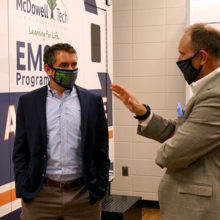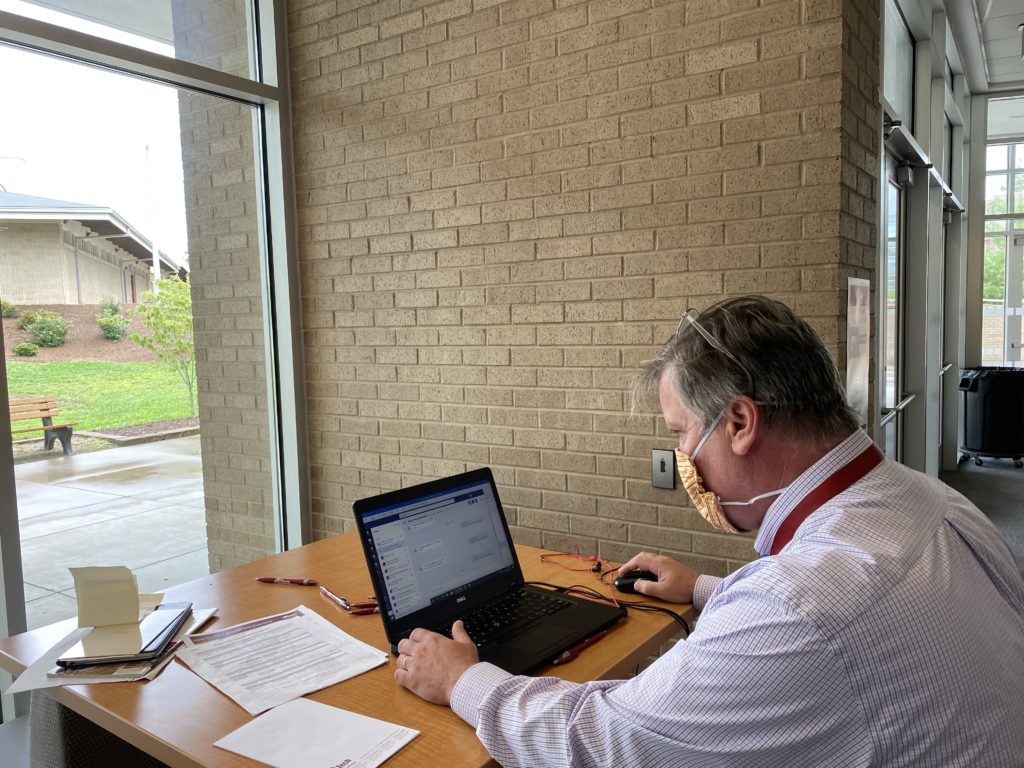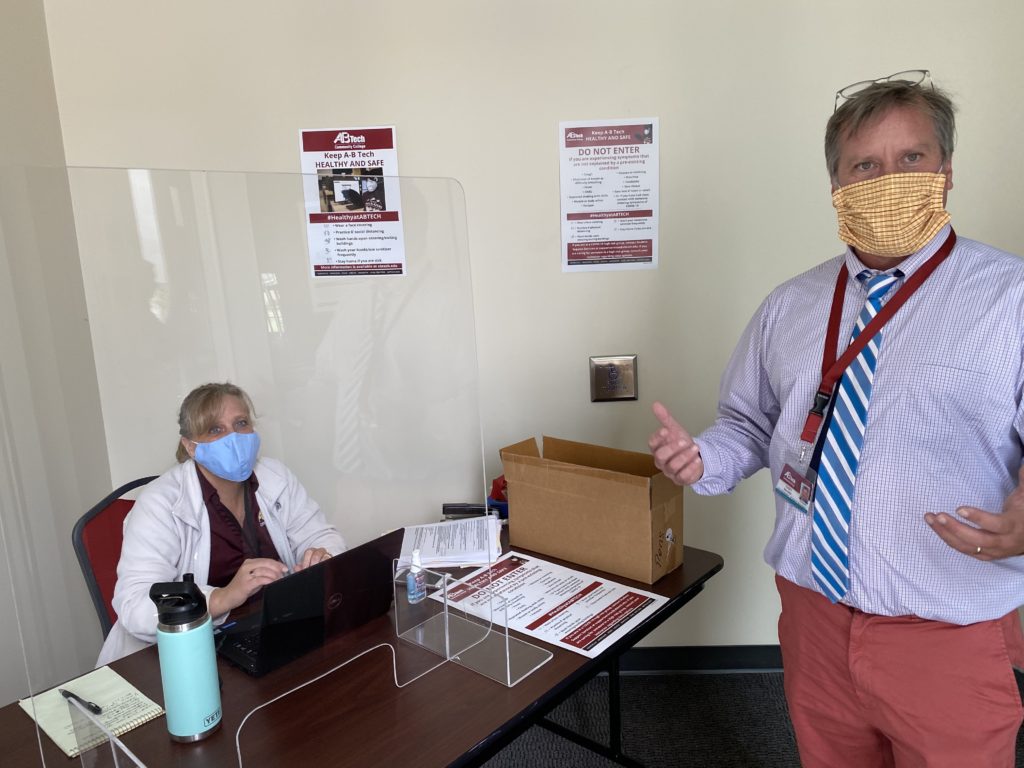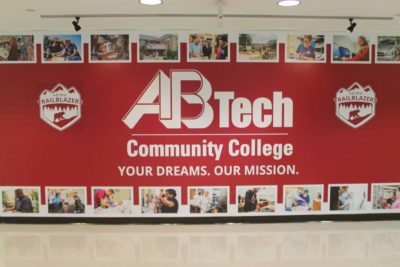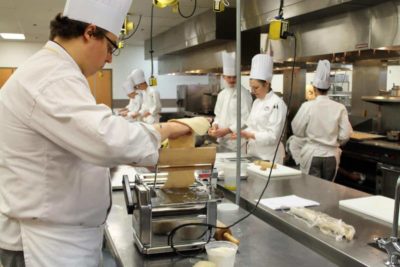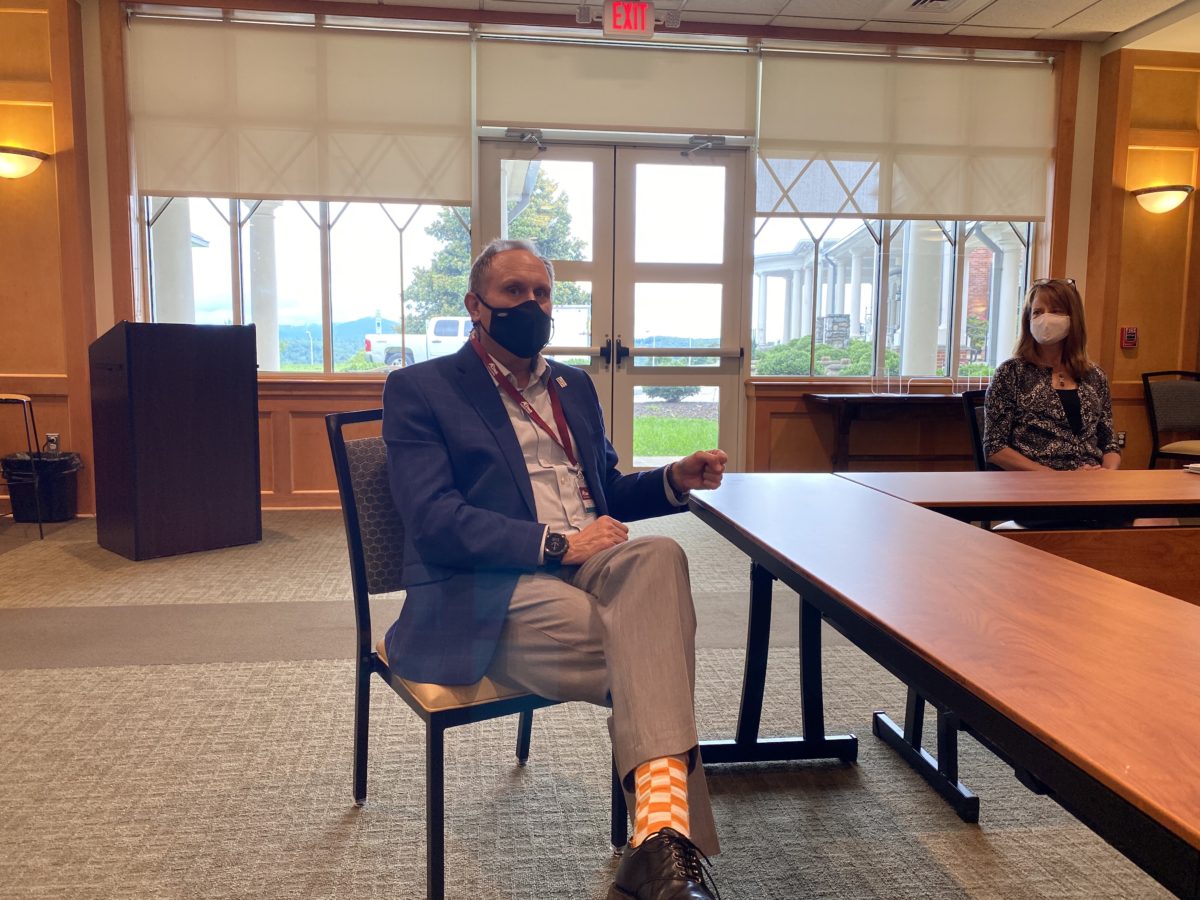

Grace and patience. As Asheville-Buncombe Technical Community College (A-B Tech) prepared to serve students this fall, President John Gossett kept preaching, to everyone involved, the importance of those two qualities.
A-B Tech serves more than 23,000 students through both curriculum and continuing education courses. More than 6,600 curriculum students are enrolled this fall, said Kerri Glover, executive director of communications and marketing for the college.
And many things have changed since spring. When A-B Tech suddenly had less than two weeks to move all coursework online because of COVID-19, the response required a crash course in making it happen. The fall semester, however, allowed for extensive preparation — and even for grace and patience.
I visited A-B Tech recently to understand the approach of Gossett’s team to a fall semester unlike any other. It was heartening to see their optimism.
Beth Stewart, vice president of instructional services, was one who exuded hope. “This is a great opportunity to train people on synchronous learning,” Stewart said. “We are going to train them well, and this will allow a pathway for the future.”
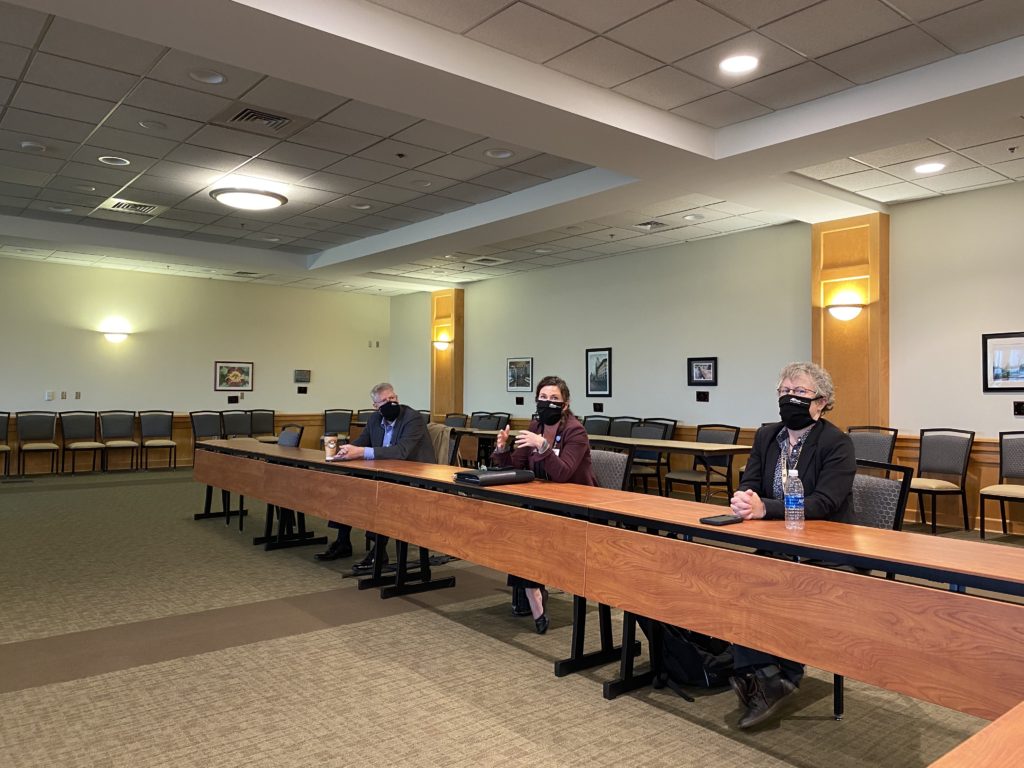

“As crazy as all of this has been, I believe we are going to come out a much stronger college,” she said.
“We are going to offer better products, be a lot more flexible, and therefore more competitive in the long term. We were already doing good things, but we are going to do great things now.”
Beth Stewart, VP of Instructional Services
Tip: Create multiple plans and pathways
A-B Tech, like other educational institutions, went to work in late spring on its plan for the fall. The initial hope was that COVID-19 would not pose a significant threat to normal operations.
The college’s plan A called for a regular fall semester featuring the usual face-to-face instruction. When A-B Tech surveyed students in the spring, Glover and Stewart said, many students expressed a desire to be taught face-to-face.
Plan B, the route the college is following now, called for courses to be mostly online, but with as many as possible delivered in real time over Zoom. Stewart shared that the faculty took the idea of synchronous education and worked on a variety of options to improve on their offerings from the spring, including courses that would mostly be taught over Zoom, but would include some hands-on components throughout the semester.
The handful of courses that will require face-to-face instruction will include social distancing, masks, and alternating course schedules that the college hopes will allow any potential COVID-19 clusters to be isolated. This has meant identifying backup options in case course instructors go down with COVID-19, among other strategies that would allow for instruction to continue.
The other option that remains on the table, plan C, would mean going wholly virtual and could require a pause in instruction for some of the hands-on courses. Plan C would be activated only if federal, state, or local guidelines require it.
Tip: Make use of existing space and other resources
As soon as the pandemic hit, A-B Tech collected every available laptop and hot spot to distribute to faculty. The college is continuing to make additional equipment available as resources allow.
In the spring, and continuing this fall, some faculty created offerings where students were able to tackle assignments at home and then drop off their materials — construction and welding among them.
A-B Tech has transitioned various spaces for the fall to support students and essential operations. The event center, for example, features multiple large rooms that have transitioned to socially distanced computer labs. The computers are spaced 12 feet apart. This setup allows for nine students at a time, with a lab aide present to assist as well.
Scheduling, registration, and financial aid are all situated in the same event center to allow students to tackle all of the essentials for registration and enrollment in one building.
Tip: Focus on morale and mental health
The college began to institute staff support and changes immediately when the pandemic hit.
It implemented pandemic emergency leave even before the state system issued guidance during the first week of the pandemic. This change in human resources allowed for employees to take leave for any issue that could be pegged to the pandemic.
At the same time that HR was activating these changes, Stewart said, the college established a COVID-19 task force that met daily initially and still meets weekly. The college even had a virologist on staff who proved invaluable to the task force.
All of these efforts aligned with an overall focus on maintaining staff morale. Instructional services appointed an unofficial morale officer who launched efforts such as a virtual creative writing workshop, a book club, creative art fair, virtual yoga, and meditation. The goal was to create connectivity and remind people they were all in this work together. The result, Stewart said, even included the unanticipated positive effect of breaking down some silos that isolated departments.
Tip: Ask — and listen to — your people
The college focused on creating a culture of listening. Shanna Chambers, the executive director of human resources, told us: “We tried to listen before we made any significant changes. And I do not believe that our staff missed a step working remotely.”
The college also launched a five-week series in which it shared results from its surveys while continuing to survey staff around core business, in an effort to solicit ideas for the fall. Anne Oxenreider, executive director of research and planning, shared a portion of their findings:
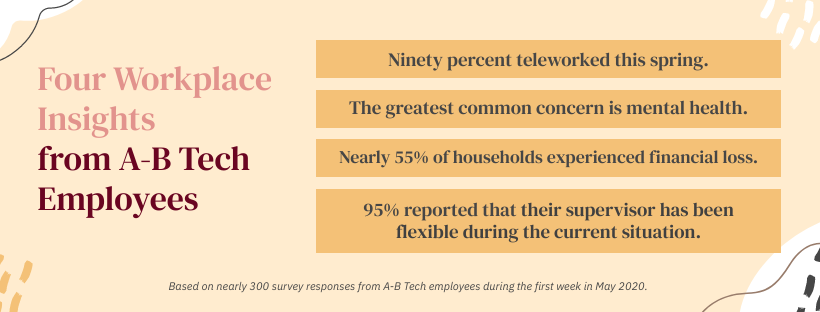



When it comes to health, one element the surveys and research showed the college was a need to focus on positive messaging, not shaming. This led to the launch of the “Keep A-B Tech Healthy and Safe” campaign.
Tip: Focus on the upside
The leadership team of the college has worked to communicate the reality of the pandemic to staff, donors, and the community.
Amanda Edwards, executive director of advancement for the college, noted that while traditional fundraising has been challenging at times, the school was able to raise about $50,000 to provide direct student assistance and emergency funds.
The college also is reminding folks that A-B Tech will not only continue to deliver instruction during COVID-19, but also find ways to bring some of the innovations necessitated by the pandemic into the future.
Stewart reiterated that from an instructional services perspective, the school leaders believe the college is much better positioned for the future through the crash course in online instruction and the subsequent professional development it required.


Gossett echoed Stewart before I departed campus: “We will take forward the lessons that we have gained through all of this hard work, and our college will be improved for the future.”
